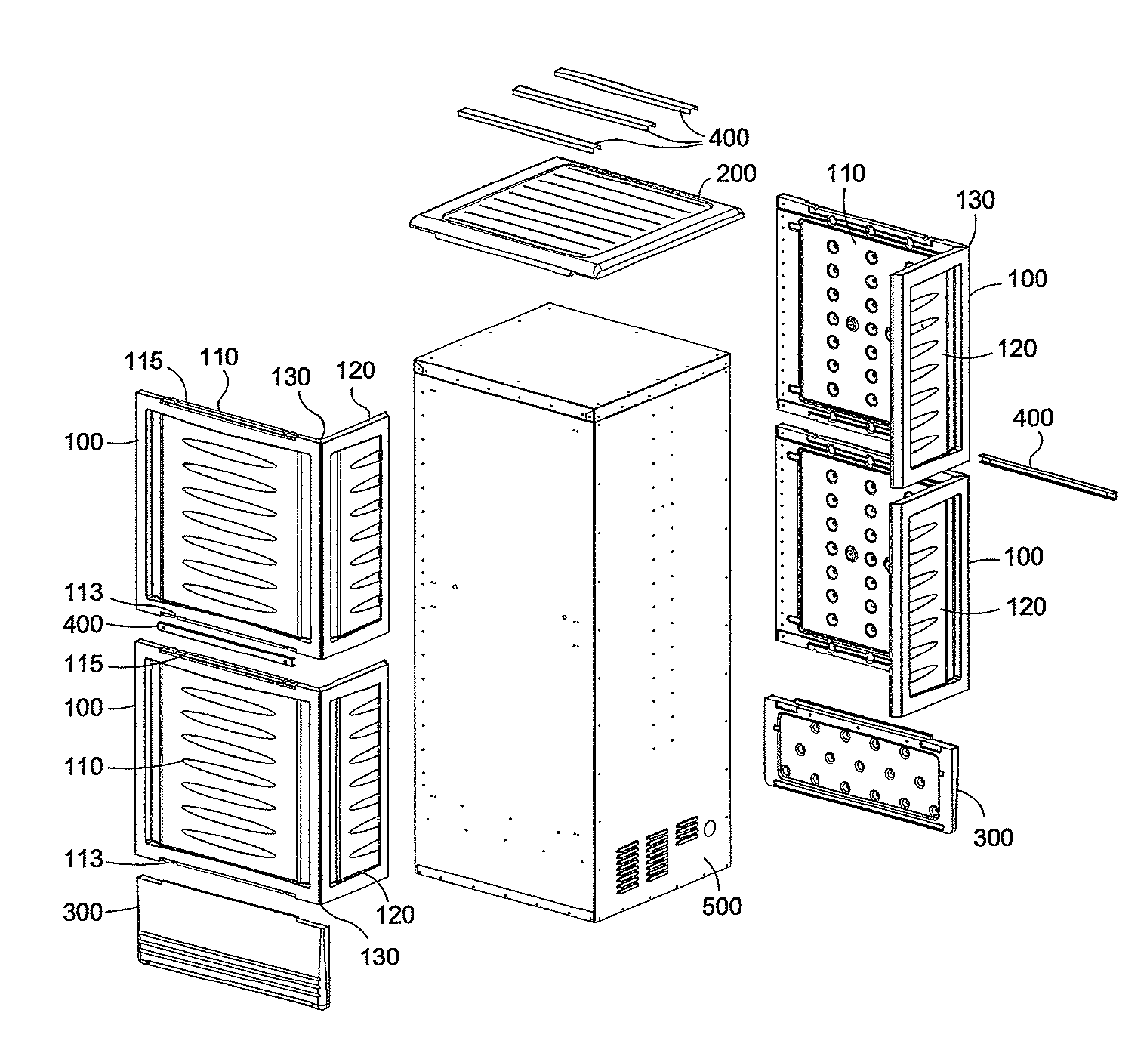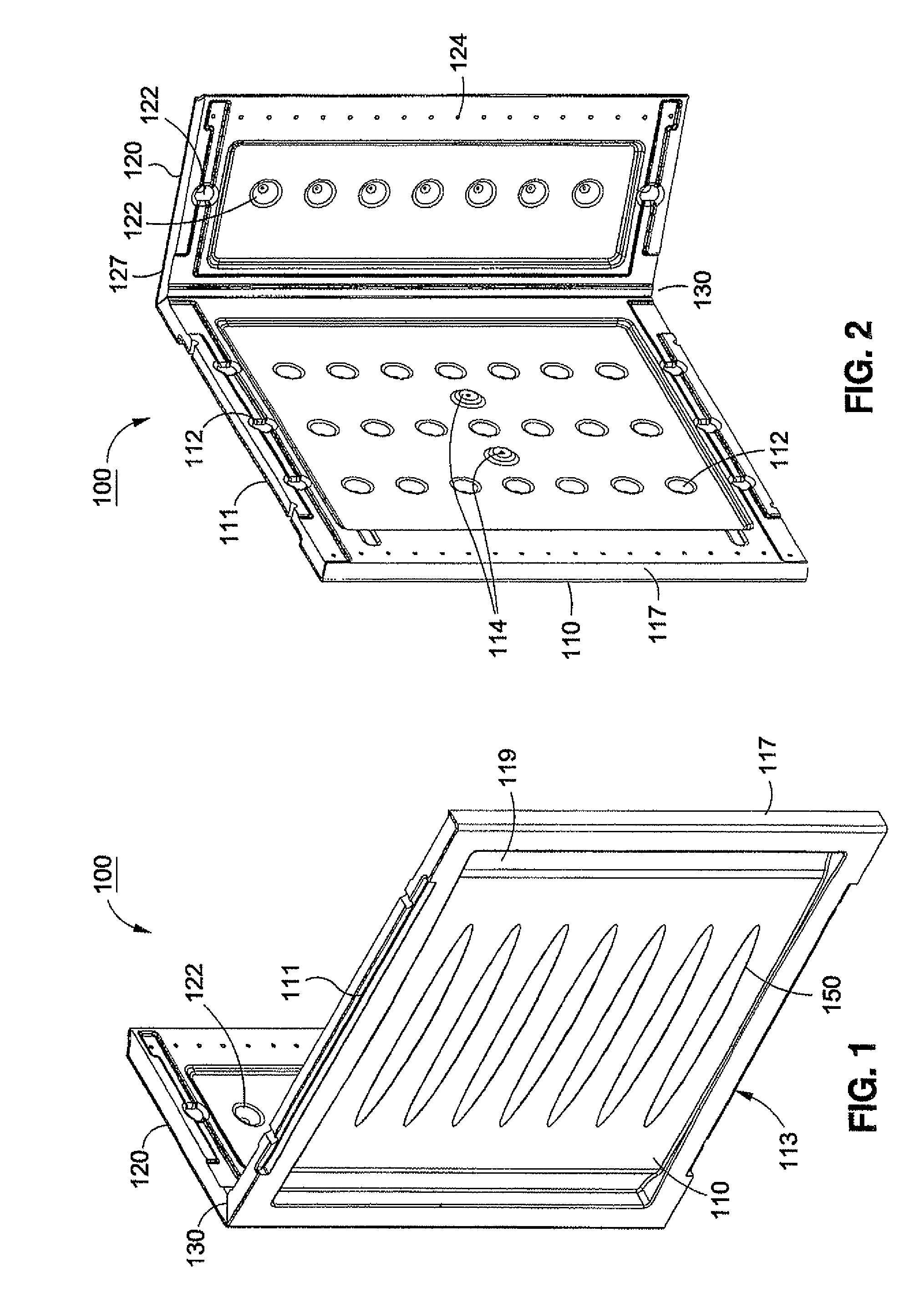Modular insulation system for an environmentally controlled cabinet
a module-based, environmentally controlled technology, applied in the field of insulated cabinets, can solve the problems of unsatisfactory insulation properties of aluminum materials, inefficient energy consumption and deterioration of food quality, use and movement of cabinets less practical, and potentially dangerous effects
- Summary
- Abstract
- Description
- Claims
- Application Information
AI Technical Summary
Benefits of technology
Problems solved by technology
Method used
Image
Examples
Embodiment Construction
[0050]FIG. 1 illustrates a perspective view of a modular insulation panel, and FIG. 2 illustrates a perspective view of the modular insulation panel rotated about 90° clockwise from the view of FIG. 1. In this regard, FIG. 1 illustrates more of the outer side of the panel that would be visible to an observer of the cabinet, whereas FIG. 2 illustrates more of the inner side of the panel which would contact the holding cabinet.
[0051]Briefly, modular insulation panel 100 is comprised of main panel assembly 110, auxiliary panel assembly 120, and hinge 130. In a preferred embodiment, the entire modular insulation panel 100 is formed as one piece, for example by molding. In other words, while main panel 100 is comprised of main panel assembly 110, auxiliary panel assembly 120, and hinge 130, it is preferred that the entire panel is manufactured at the same time and as a single piece.
[0052]Main panel assembly 110 is connected to auxiliary panel 120 by hinge 130. Hinge 130 flexes inwardly s...
PUM
 Login to View More
Login to View More Abstract
Description
Claims
Application Information
 Login to View More
Login to View More - R&D
- Intellectual Property
- Life Sciences
- Materials
- Tech Scout
- Unparalleled Data Quality
- Higher Quality Content
- 60% Fewer Hallucinations
Browse by: Latest US Patents, China's latest patents, Technical Efficacy Thesaurus, Application Domain, Technology Topic, Popular Technical Reports.
© 2025 PatSnap. All rights reserved.Legal|Privacy policy|Modern Slavery Act Transparency Statement|Sitemap|About US| Contact US: help@patsnap.com



